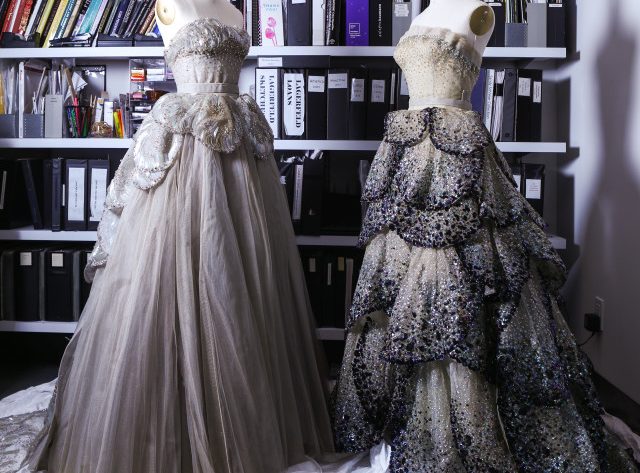On Wednesday morning, in the depths of the Metropolitan Museum of Art — in rooms regularly only accessible to its employees — the Costume Institute announced the theme of its next big spring exhibit, the one that informs the Met Gala.
“Sleeping Beauties: Reawakening Fashion” will be up at the Metropolitan Museum of Art in New York City from May 10 through Sept. 2, 2024. The exhibit and accompanying Met Gala will be sponsored by TikTok, with support from Loewe and Condé Nast.
The vague, fairy tale-like title had many people confused about what the upcoming exhibit will actually be about. So, we’re here to answer some of those burning questions, based on what we saw and learned at the press conference from Curator in Charge Andrew Bolton and Met CEO Max Hollein.
Is “Sleeping Beauties” about princesses?
No. It also has nothing to do with sleep.
“The focus is on the question of, ‘What happens to an object when it enters our collection, which basically transforms it from a garment that was worn into an object that’s being shown?’,” Hollein told the small group of press gathered for the reveal on Wednesday.
Photo: BFA.com/Hippolyte Petit/Courtesy of the Metropolitan Museum of Art
The Costume Institute’s Spring 2024 exhibit pulls from its permanent collection, which holds more than 33,000 pieces that largely sit in storage (most of it within the Met, 15% across the East River in Queens). “The last time we did an exhibition that was exclusively based on our collection was ‘About Time,'” Bolton explained, referring to the museum’s pandemic-era fall 2020 exhibit. “Throughout the years, (we’ve had) exhibitions where we try to reawaken costumes in our collection — usually conceptually, by interpretation and by juxtaposing historical and contemporary garments side by side to mutually inform and enliven each other. But for this one, we wanted to literally reawaken the costumes.”
The pieces on display are the so-called sleeping beauties, being reawakened from their slumber (i.e. their dedicated spots in the Met’s storage facilities) for us visitors to see and admire. That’s also why the announcement happened within the hallowed halls of the museum’s offices, down in the conservation areas — “where the costumes sleep,” as Bolton put it.

Photo: BFA.com/Hippolyte Petit/Courtesy of the Metropolitan Museum of Art
“When a costume comes into the Met’s collection, it’s changed irrevocably,” he said. “It can’t be worn, obviously, so you don’t see the movement, you can’t smell it, you can’t hear it, you can’t touch it. A lot of the sort of sensorial access we have to garments are diminished. In a sense we’re left with really a sight. The idea for this exhibition is to reawaken the sort of sensorial capacities within fashions through various technologies.”
How will the garments be “reawakened”?
For Bolton, the starting point for the exhibit was a House of Worth gown belonging to Caroline Schermerhorn Astor featured in Harold Koda and Richard Martin’s survey of haute couture for the museum in 1995. “It was one of the reasons why I came to the Met, actually,” he remarked. When he arrived, though, he was “horrified” by the state of the garment, which had been damaged by what’s referred to as “inherent vice”.
“It’s a sort of condition that’s intrinsic to the garment, where it’s literally self-destructing or self-deteriorating,” he explained. “There’s nothing we can do about it — there’s no stitching or adhesive treatments that brings it back to life.”
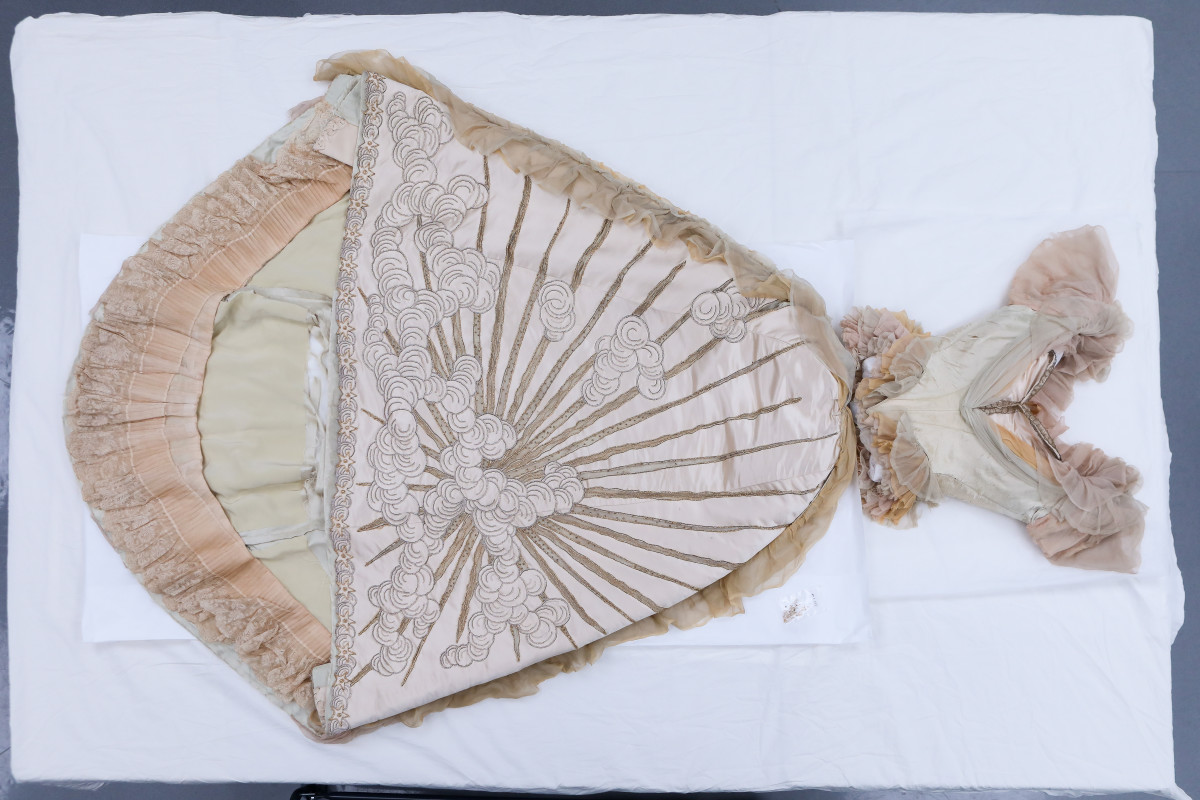
Photo: BFA.com/Hippolyte Petit/Courtesy of the Metropolitan Museum of Art
In the case of this particular piece, the damage is so extensive, it can’t be put on a mannequin. So, its “reawakening” will happen with the help of “Pepper’s Ghost” technology — “a smoke-and-mirror idea where we create a pattern of the garment, digitize it and then create a CGI version of the dress that’ll appear as a hologram in the exhibition,” in Bolton’s words. “You’ll see it as a fully embodied dress within the exhibition, floating above the (actual garment, which will be laid flat underneath,) almost like this ectoplasmic soul.”
Hollein believes the exhibit “will be enormously innovative in regard to how it uses technology and even gives back the integrity of these costumes by making sure that you can actually feel them, smell them, experience them and have a whole holistic idea about their usage.”
If it’s not about princesses, what’s connecting all the pieces on display?
Bolton loves a throughline. Sometimes, you see it literally in his exhibitions. (See: “A Line of Beauty.”) In the more conceptual ones, it helps inform how the show is structured. For “Sleeping Beauties,” he turned to nature — because it’s largely represented within the collection, and because it’s “a broader metaphor for fashion, about its fragility and ephemerality, its circular nature and ideas of renewal and rebirth and regeneration,” he argued.
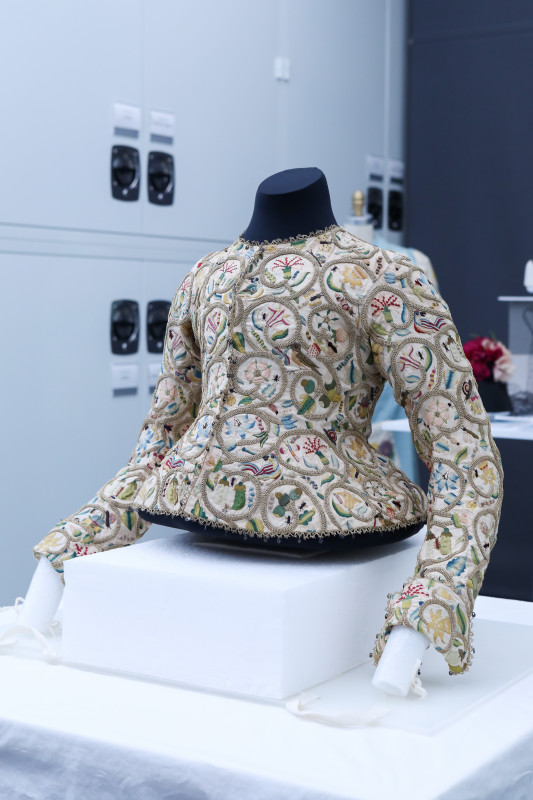
Photo: BFA.com/Hippolyte Petit/Courtesy of the Metropolitan Museum of Art
The spark was lit by a 17th-century jacket featuring embroidered motifs of flowers, fruits and vegetables. In “Sleeping Beauties,” it’ll be shown alongside a Karl Lagerfeld Haute Couture jacket from the ’90s that was inspired by Elizabethan embroidery — “to reawaken the concepts behind it,” per Bolton.
What brands are featured in “Sleeping Beauties”?
At the preview, Bolton walked press through pieces from House of Worth, Dior, Schiaparelli, Anna Maria Garthwaite, Madeleine Vionnet, Alexander McQueen, Charles James, Norman Norell, Loewe and Nina Ricci. There will be more than 250 items on display, spanning both apparel and accessories.
What’s notable about this exhibit?
“Sleeping Beauties” will be more interactive than past Costume Institute exhibits.
For one, the team is developing a projection of the embroidery on the aforementioned 17th-century jacket that animates some of the motifs, as well as an embossed wallpaper that’ll allow visitors to “actually feel the embroidery on the walls,” per Bolton. It won’t be the only element people can touch.
“(Dior is) very kindly remaking the famous Miss Dior dress in a miniature version so you can actually feel the outline and the embroidery,” he teased. You can’t actually touch the object, but we’re trying to recreate some of the effects of the object.”
Leong Leong is designing the space, which Bolton described as “architectural bell jars” that will be connected, each one immersive and hosting a grouping of pieces based on natural elements — there’ll be one for earth and gardens, another for air and the sky, a third for water and the sea.
Photo: BFA.com/Hippolyte Petit/Courtesy of the Metropolitan Museum of Art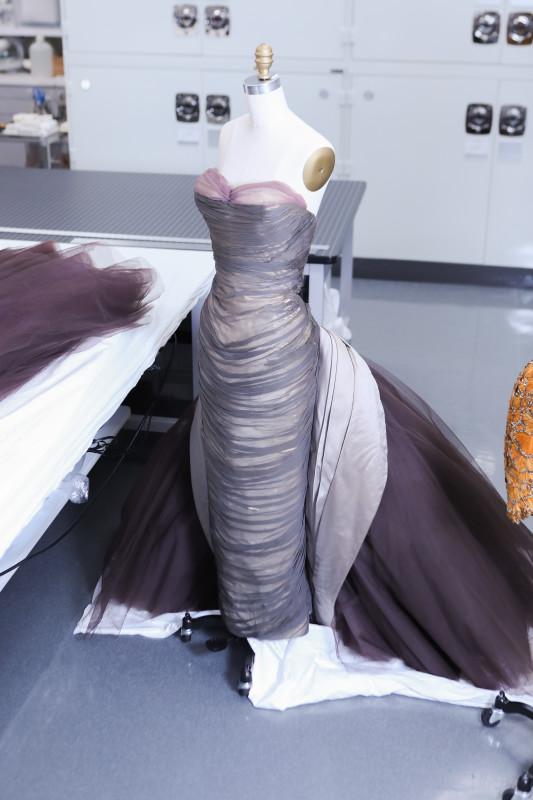
Photo: BFA.com/Hippolyte Petit/Courtesy of the Metropolitan Museum of Art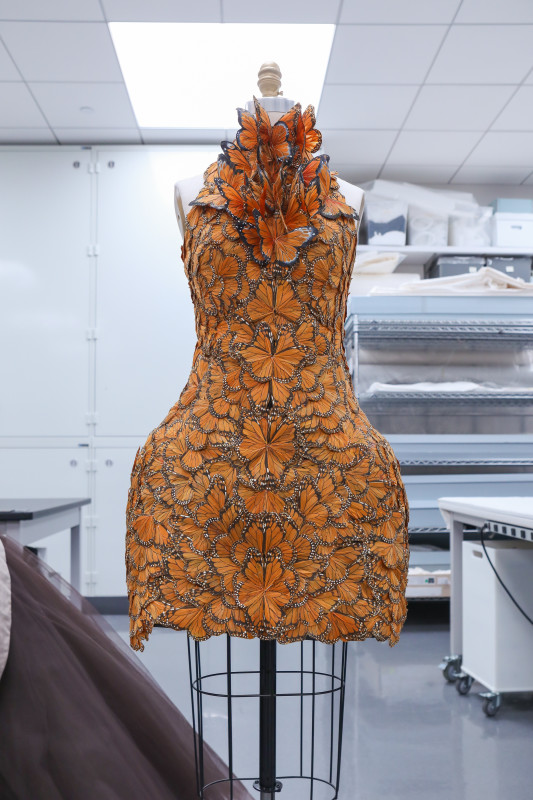
The Costume Institute is also working with smell scientist Sissel Tolaas (known in the industry for her work with Balenciaga). “She’s created an apparatus that captures the smell and the history of the smell of the actual garments themselves, so you can trace the DNA and either create smells from that or these molecular readings that are almost like heartbeats,” Bolton said. “In some cases, (we) will recreate the smell of a garment. I like the idea of playing with the perception, the idea of what you think it’s going to smell like and what it actually smells like.”
Sound will also be incorporated into the “Sleeping Beauties” experience. “There’s something called scroop — it’s the sound that taffeta makes,” Bolton explained. “In the 19th century, it was very much marketed as: The higher the scroop was, the more expensive the dress was. So, in one of the rooms, you’re going to hear scroop, you’re going to hear the taffeta rustle as you walk through.”
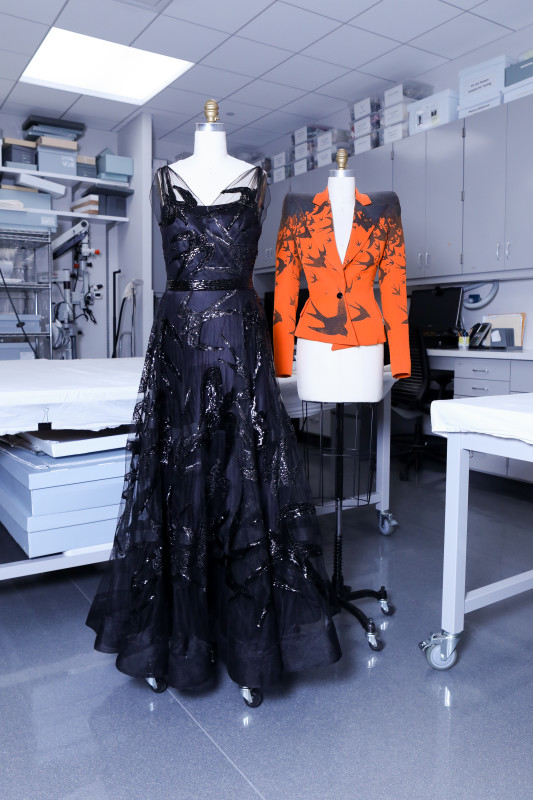
Photo: BFA.com/Hippolyte Petit/Courtesy of the Metropolitan Museum of Art
The immersive nature of “Sleeping Beauties” is a result, in part, of Bolton’s frustration with the question of, “How you can tell the full story of an object when all you’re left with is sight?,” he explained, “particularly when it comes to notions of accessibility. We want to make it more of an accessible exhibition for many different types of people who suffer from various sorts of sensory depletions.”
Then, there’s the way that fashion “is a living art form, more than any other art form,” he continued. “How do we breathe life back into an art form that’s living, that was intended to be lived in by a person and embodied?”
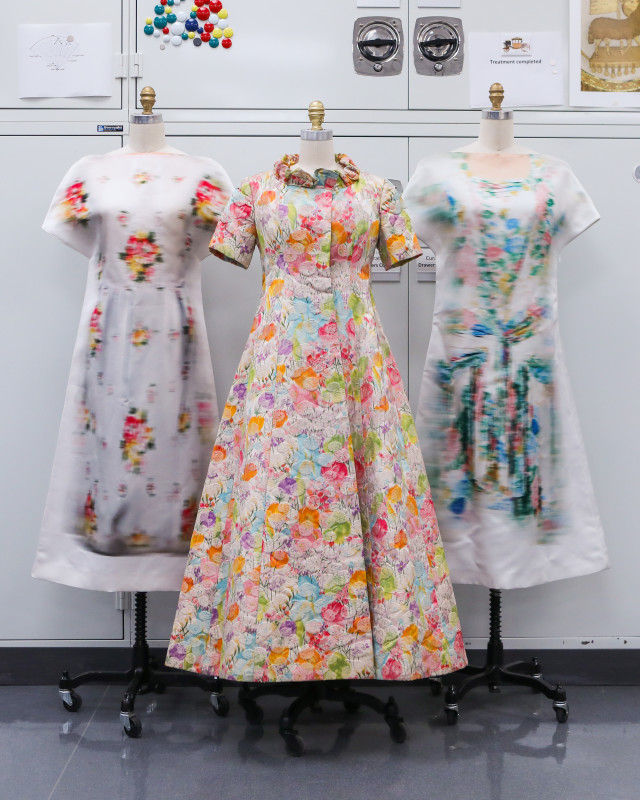
Photo: BFA.com/Hippolyte Petit/Courtesy of the Metropolitan Museum of Art
Accessibility is also why the Costume Institute approached TikTok about sponsorship: “We really wanted to have the biggest, broadest platform possible in terms of how the show is actually disseminated more globally,” Bolton said.
When’s the Met Gala?
The Met Gala will, of course, be on the first Monday in May — which, in 2024, will be May 6.
Will Met Gala guests dress on theme?
Lol.
(To be fair, the exact dress code hasn’t been announced. Neither have the co-chairs. But for now, expect lots of Loewe — which, promising!)
Want the latest fashion industry news first? Sign up for our daily newsletter.
